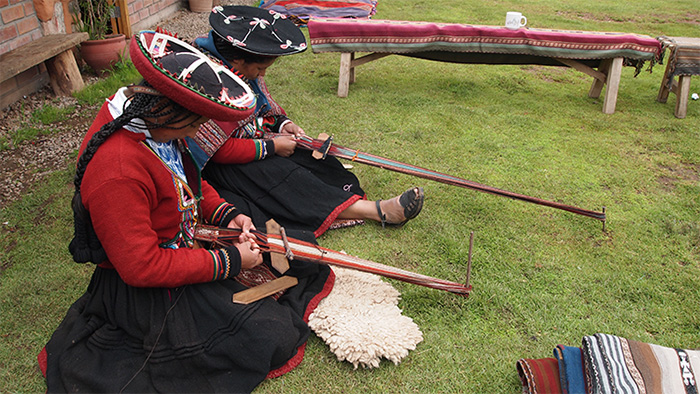Next summer, the forty-ninth annual Smithsonian Folklife Festival will highlight Peru, one of the most culturally and ecologically diverse countries in the world. The Festival will feature more than one hundred Peruvian artisans and cooks, musicians and dancers, as well as artists and tradition bearers from the Peruvian American diaspora.
The Folklife Festival will take place Wednesday, June 24, through Sunday, June 28, and Wednesday, July 1, through Sunday, July 5, 2015. It will be located on the National Mall in front of the Smithsonian’s National Museum of the American Indian. Admission to the Festival is free, and hours are from noon to 6 p.m. each day, with special evening events such as concerts and dance performances beginning at 6:30 p.m. The Festival is co-sponsored by the Government of Peru and the National Park Service.
“The Festival will go beyond stereotypes by focusing on the people behind the traditions and crafts,” said Olivia Cadaval, one of the program’s co-curators. “Peru is a country with a rich history that continues into the present, and we hope that Festival visitors come away with a greater sense of how local communities use sustainable cultural tourism both to honor and reinterpret their heritage.”
“The Folklife Festival will be a wonderful opportunity to showcase our unique talents while demonstrating the cultural expressions of various different regions of Peru,” said Magali Silva, minister of foreign trade and tourism of Peru. “Each participant is part of a social inclusion model to preserve and value the cultural representations of Peru, which is one of the most important objectives of the Peruvian government.”
The program’s theme is “connectivity.” Visitors will experience how ties are made—and maintained—in Peru through cooking and craft demonstrations, music and dance performances, moderated conversations, ritual and celebratory processions, and other activities.
One highlight—as well as a display of the program’s theme—will be a rope bridge or q’eswachaka (in Quechua q’eswa means “to braid” and chaka means “bridge”). Rebuilt every year by five communities from the province of Canas, the bridge represents more than six hundred years of social history, technological ingenuity and cultural pride, and it speaks to the continued relevance of tradition in contemporary Peruvian society. During the ten days of the Festival, visitors will see the creation of a bridge from the twists of its first braids to the rituals marking its completion.
The Festival will complement the National Museum of the American Indian’s exhibition The Great Inka Road: Engineering an Empire, which will run June 26, 2015, through June 1, 2017.


